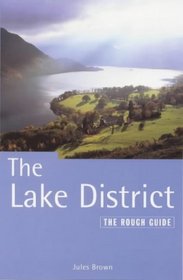Search -
The Rough Guide to The English Lake District, 1st Edition (Rough Guides)
The Rough Guide to The English Lake District 1st Edition - Rough Guides
Author:
Introduction The Lake District is England's most celebrated, most visited and most hyped scenic area. Tucked into a bulge between the industrial cities of northwest England and the Scottish borders, the small region is literally irresistible to the sixteen million visitors a year who pour in to experience its famous lakes, picturesque... more »
Author:
Introduction The Lake District is England's most celebrated, most visited and most hyped scenic area. Tucked into a bulge between the industrial cities of northwest England and the Scottish borders, the small region is literally irresistible to the sixteen million visitors a year who pour in to experience its famous lakes, picturesque... more »
ISBN-13: 9781858285337
ISBN-10: 185828533X
Publication Date: 7/1/2000
Pages: 224
Edition: 1
Rating: ?
ISBN-10: 185828533X
Publication Date: 7/1/2000
Pages: 224
Edition: 1
Rating: ?
0 stars, based on 0 rating




